Greek Architecture
Greek architecture is characterized by its use of columns, pediments, and entablatures. The Doric, Ionic, and Corinthian orders are the most well-known styles of Greek columns. Greek architects also incorporated mathematical principles into their designs, such as the Golden Ratio.
Greek architecture influenced Western architecture for centuries, with its enduring legacy seen in iconic structures such as the Parthenon and the Temple of Olympian Zeus.
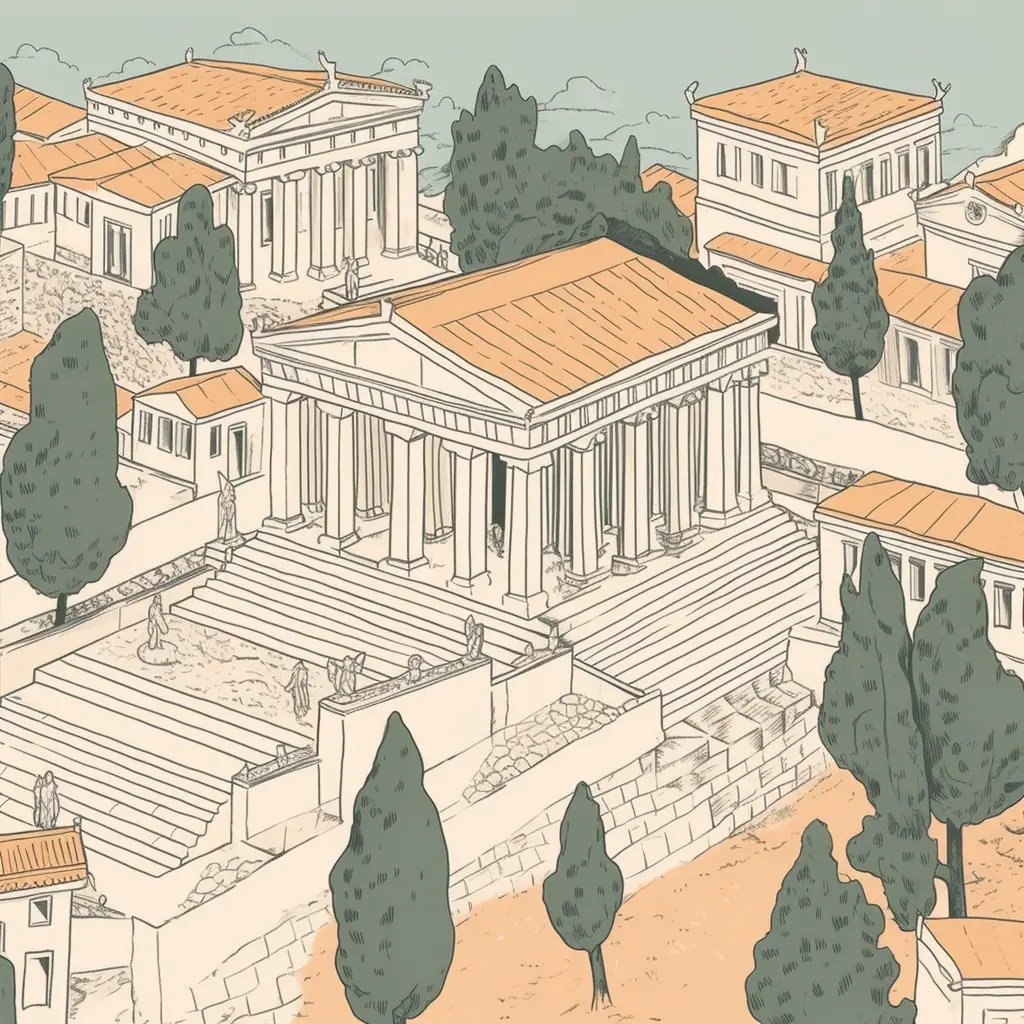
Ancient Greek Columns Facts
- The Doric style is the most plain and simple.
- The Ionic style is more slender and more ornate than the earlier Doric style column.
- The Corinthian style is quite fancy and decorated with acanthus leaves and flowers.
Even though it may seem simple, the Greeks created a wonderful and lasting legacy of architecture. The columns and architraves were carved with leaves and flowers, scenes of battles, and mythological creatures. The columns were decorated with lines and bases, and capitals, which topped off the columns and connected them to the architraves.
These are some important terms to learn about Greek architecture:
Methodical order: Greek buildings were constructed following specific rules and guidelines, ensuring consistency and uniformity in their design.
Safety and strength: The rules implemented in Greek architecture aimed to create buildings that were not only aesthetically pleasing but also structurally sound and durable.
Enduring legacy: Many Greek buildings have withstood the test of time and remain standing today, even after thousands of years, showcasing the remarkable craftsmanship and construction techniques of the ancient Greeks.
Architectural orders: The rules for building Greek structures evolved into architectural orders, which established precise standards for column width, height, and the number of columns required in a building.
Different styles: Various architectural orders developed, giving rise to different styles of Greek architecture, each with its own distinctive characteristics and features.
Classical Architecture
Classical Architecture includes the architectural styles of ancient Greece and Rome. Greek architecture contributed key elements to this style, including the development of three distinct types of design: Doric, Ionic, and Corinthian.
These styles, identified by different column shapes, were the main feature of Greek buildings and demonstrated the Greeks’ skill in creating balanced and proportional structures. When the Romans later adopted these styles, they added their own elements, like arches and domes, to make the style more complex.
Greek architecture is not just related to Classical architecture – it formed its basis, and it continues to influence architectural design today.
Doric, Ionic, and Corinthian Orders
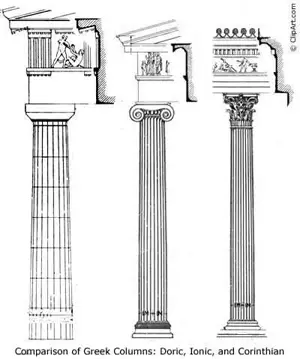
The Doric, Ionic, and Corinthian orders are essential to understanding Greek architecture. Each one has a unique style and design philosophy.
The Doric order, the simplest, features sturdy columns and plain tops. The Ionic order, found mainly along the west coast of Turkey, is known for its slender columns and scroll-like tops. It is often considered more elegant.
The Corinthian order is the most ornate of the three, with tops decorated with acanthus leaves. Although not as common during the Greek era, its grandeur was widely appreciated by the Romans. Each order displays the Greek commitment to balance and proportion in architecture.
The three main Greek architectural orders are :
Doric
The Doric order is a fundamental element of Greek architecture, known for its simplicity, strength, and timeless elegance. It features sturdy columns without a base and a plain capital, symbolizing power and stability.
Originating in mainland Greece during the Archaic and Classical periods, the Doric style represents the early development of Greek architecture, marking the transition from wooden to stone structures. Its austere design embodies the Greek pursuit of harmony and balance, making it an enduring symbol of architectural beauty.”
Ionic
The Ionic order is an elegant architectural style in Greek architecture, known for its slender proportions, ornate details, and distinctive scroll-like capitals called volutes. Originating in the Ionian region of Greece and gaining popularity during the Classical era, the Ionic order represents a refined development from the earlier Doric style, showcasing the evolving mastery of Greek architecture.
Adorned with decorative elements such as intricately carved friezes and embellished bases, the Ionic order reflects the Greeks’ deep commitment to artistic expression and beauty. Its enduring influence can be observed in numerous iconic structures that have left a lasting impression on the architectural landscape of ancient Greece
Corinthian
The Corinthian order is renowned in Greek architecture for its lavish ornamentation and intricate capital design. Emerging in the later Classical period, it exemplifies the Greeks’ continuous pursuit of architectural refinement.
Corinthian columns, adorned with delicate acanthus leaves, create a captivating display of natural beauty and craftsmanship. Symbolizing opulence and grandeur, this order is often reserved for significant structures or utilized as interior embellishments.
With its graceful proportions and intricate detailing, the Corinthian order has profoundly influenced architectural history, evoking awe and admiration across centuries. It serves as a testament to the Greeks’ unwavering dedication to artistic expression and mastery of architectural aesthetics
Roman Architecture
Roman Architecture was significantly influenced by Greek architecture, but it also introduced its own innovations. The Romans borrowed the Greek styles known as the Doric, Ionic, and Corinthian orders and used them in many types of buildings.
They added to these styles with advanced engineering techniques, notably the arch and the dome, which allowed them to build larger and more robust structures. Furthermore, the Romans started using new materials, including concrete, which brought more flexibility to their architectural designs.
This blend of Greek tradition with Roman innovation resulted in a unique architectural style that was both practical and grand.
Acropolis of Athens
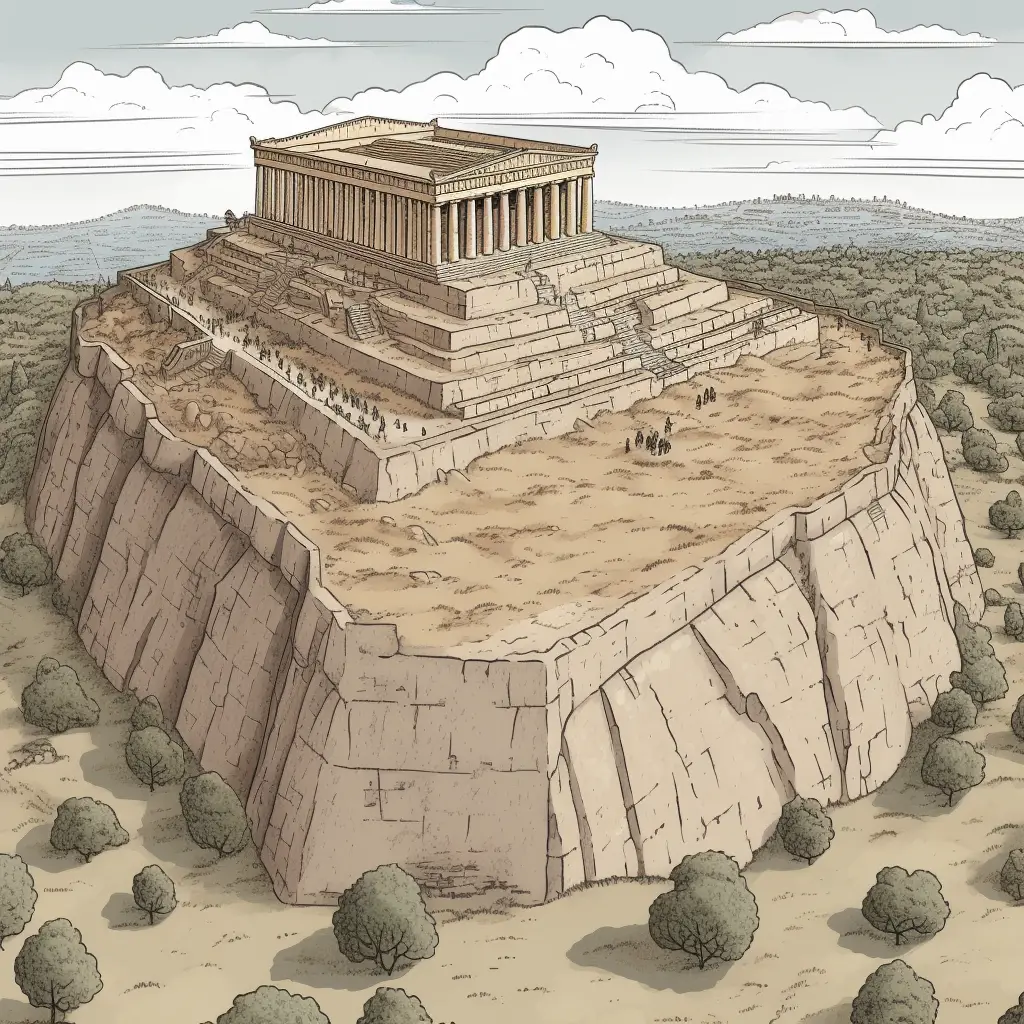
The Acropolis of Athens is a key symbol of Greek architecture, showcasing the remarkable architectural achievements of ancient Greece. Located on a hill above Athens, the Acropolis consists of several buildings, with the Parthenon being the most famous.
This iconic temple shows the Greek mastery of balance and symmetry. Other structures demonstrate the range of architectural styles used in ancient Greece, from the simple and sturdy Doric style to the more ornate and delicate Ionic style.
The Acropolis is a testament to the importance of architecture in ancient Greek culture and its lasting influence on architectural principles. It continues to be seen as a model of classical beauty.
The Parthenon
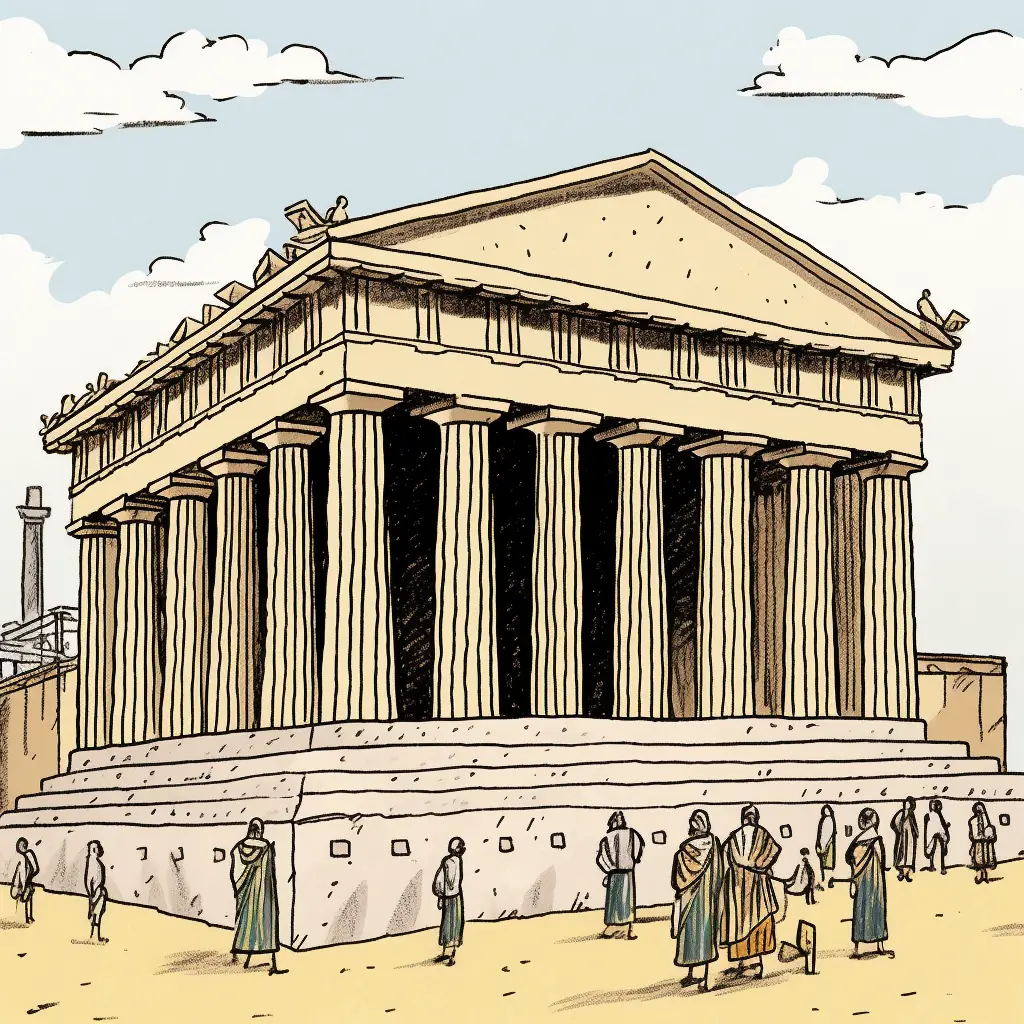
The Parthenon is a centerpiece of Greek architecture, showcasing the key principles and aesthetics of the classical style. It’s a significant temple located on the Acropolis of Athens, dedicated to the goddess Athena.
The Parthenon is a prime example of the Doric order, demonstrating the Greeks’ skills in balance and symmetry. The builders carefully calculated its dimensions to ensure visual harmony. The exterior was adorned with carvings depicting various scenes from mythology and history, showing the strong connection between architecture and art in Greek culture.
The Parthenon continues to influence architectural design, cementing its status as a symbol of ancient Greece and a testament to Greek architectural innovation.
Ancient Greek Temples
Ancient Greek temples are key examples of Greek architecture. These buildings were designed to honor the gods, reflecting the important role of religion in Greek culture. Greek temples often follow one of three styles, each with its own characteristic column shape.
These styles demonstrate the Greek skills in geometry, symmetry, and proportion, which were used to create a balanced and harmonious overall design. Greek temples were also decorated with intricate sculptures, showing the close connection between architecture and art in Greek society.
From Athens to Delphi, Greek temples have had a significant impact on architectural history, showcasing the aesthetic and cultural achievements of ancient Greece.
Types of buildings
Besides just houses and marketplaces, Greek cities had many different types of specialized buildings. Many of these buildings can be found in most ancient Greek cities.
Temples
Temples are the most common type of public buildings in ancient Greece. The purpose of a temple was to store a religious statue. Some temples were very large, but others could be very small, depending on the size of the statue and how many people wanted to visit it. Perhaps one of the most famous Greek temples is The Parthenon.
Stoas
Stoas were a lot like temples but were extra long, and sometimes they were even two or three stories high. These buildings were big because they were used as large gathering places for the public, such as marketplaces, public offices, and places where people could stroll and meet other people.
Theatres
Theatre performances and plays were a big part of Greek life, so theatres were an important part of Greek cities. Usually, they were built into a hillside, where the public could sit along the hills and watch the action. In large cities, some theatres could sit tens of thousands of people!
Assembly Hall
An assembly hall was similar to a theatre but was much smaller. This building was used to have important town meetings.
Gymnasia
Gymnasiums are still a common part of most schools, and these buildings began with the Greeks. Parts of ancient Greek gymnasia were wrestling grounds, which were open to the outside, and running tracks. Other parts of the gymnasia were lecture halls and other smaller rooms where Greek athletes and warriors could train.
Amphitheaters and Stadiums
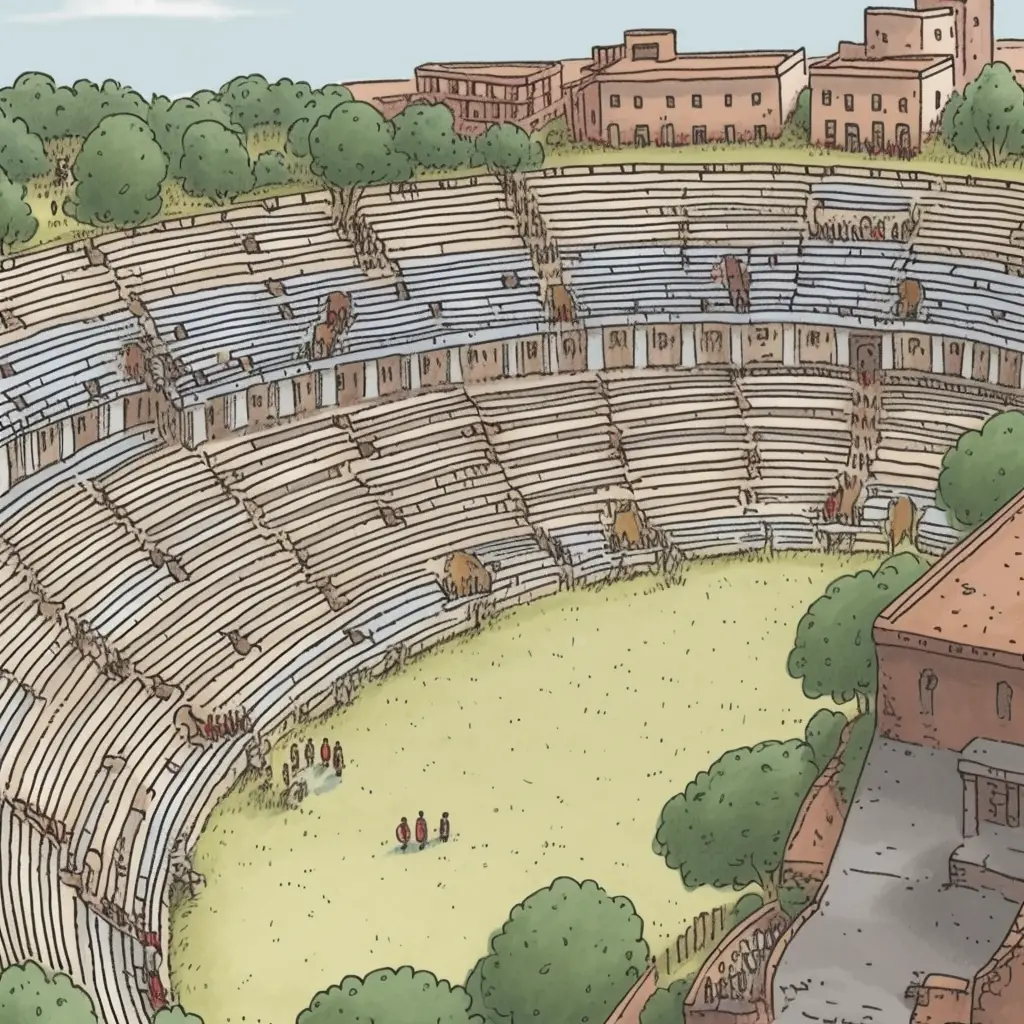
Amphitheaters and stadiums are important examples of Greek architecture, reflecting the ancient Greek emphasis on public events and sports.
Greek amphitheaters, with their semi-circular design, were made for theatrical performances and ensured visibility for all spectators. Stadiums were designed for athletic events, with a unique elongated shape that included a running track and tiered seating.
These structures showcase the Greek principles of practicality and beauty in architecture. Their basic designs are still influential today, as seen in modern theaters and sports stadiums.
Greek City-States (Polis)
Greek city-states, also known as ‘polis’, had a significant influence on Greek architecture. Each city-state had its own unique influences, from geography to culture, that shaped its buildings and structures.
This led to a range of architectural styles, from grand temples on fortified hills to simpler, functional buildings in more military-focused city-states.
Coastal city-states often favored more ornate styles. Despite their differences, all city-states shared common Greek architectural principles.
This variety within a unified style is a key characteristic of Greek architecture, reflecting the balance of unity and diversity in the Greek city-states themselves.
Neoclassical Architecture
Neoclassical architecture, prominent in the 18th and 19th centuries, represents a revival of Greek architectural principles. This movement was characterized by a return to the simplicity and grandeur seen in ancient Greek buildings.
Architects of the Neoclassical era adopted the Greek styles, incorporating them into a wide variety of structures. The prevalent use of white in these designs was a nod to the classic Greek aesthetic. These architectural choices show the enduring influence of Greek architecture.
Neoclassical architecture is a testament to the continued relevance of Greek principles, demonstrating their adaptability in various architectural contexts throughout history.
Greek Architectural Sculpture
Greek architectural sculpture is a key aspect of Greek architecture, demonstrating the blend of art and design in ancient Greece.
Buildings were often decorated with carvings and reliefs, portraying scenes from mythology, history, and everyday life. These elements added to the visual appeal of the buildings and also conveyed cultural stories and values.
Statues of important figures were also placed in and around buildings, linking architecture and sculpture. This tradition shows the Greek view of architecture as a holistic experience, meant to engage both the visual and spatial senses of the viewer.
Classical Architectural Orders
The Classical Architectural Orders owe their origins to the pioneering work of Greek architects who established the foundation for architectural aesthetics in the Western world. These orders encompass three main styles – Doric, Ionic, and Corinthian – which were developed by Greek architects.
Each order consists of distinctive column designs paired with an entablature. Greek architects began with wooden pillars, gradually evolving into the Doric column, which marked the early stages of Greek architecture.
The Ionic and Corinthian styles introduced more intricate designs. The enduring influence of these Greek-originated orders can be witnessed in Western architecture, from the Renaissance to contemporary times. Their timeless appeal is evident in numerous structures found in modern cities, underscoring the lasting impact of Greek architectural wisdom.
Materials Used in Greek Architecture
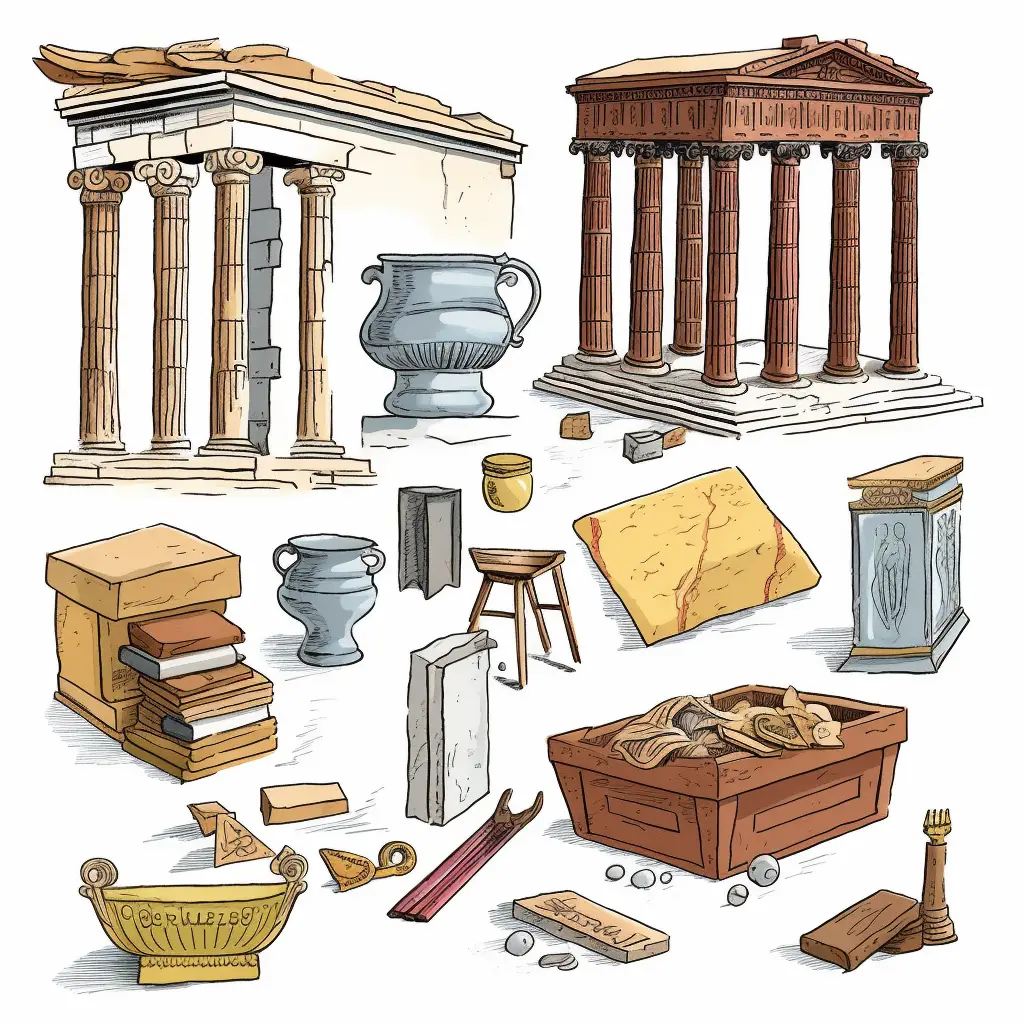
Greek architecture demonstrates a preference for specific materials that exemplify the ingenuity of ancient Greek builders. Initially, wood was used, but as architectural techniques advanced, more durable materials were employed.
Limestone and, more notably, pure white marble became the materials of choice. Greek architects meticulously selected the finest marble, often sourced from quarries like Naxos, Paros, and Mt. Pentelicon near Athens.
Marble not only provides aesthetic appeal but also allowed intricate carving and detailing, showcasing the skill and craftsmanship of Greek architects. Today, the remnants of these magnificent marble buildings stand as a testament to the lasting impact of Greek architecture.
Distinctive Elements in Greek Architecture
Distinctive elements in Greek architecture set it apart and make it instantly recognizable. Greek architects employed geometric principles and optical tricks to create buildings that appeared harmonious and visually captivating.
They paid meticulous attention to the positioning of their structures, ensuring they could be admired both up close and from a distance. By incorporating optical illusions such as subtly leaning columns and strategic column thickness, Greek architecture achieved a sense of straightness and balance.
These refined techniques reflect the Greeks’ remarkable understanding of aesthetics and their desire to create visually stunning buildings.
Greek Domestic Architecture
Greek domestic architecture provides insights into the daily lives of ancient Greeks. Early homes were built with mud brick and packed earth floors, while later houses featured stone construction with plastered exteriors.
Greek domestic architecture varied in style and layout, with one or two-story houses being common. Town planning was limited, resulting in narrow streets in many cities. Fountains houses and social gathering places emerged, reflecting the importance of community spaces.
Although less monumental in scale, Greek domestic architecture offers valuable glimpses into the daily life and societal structures of ancient Greek civilization.
Golden Ratio
The Golden Ratio, an appealing mathematical proportion, plays an important role in Greek architecture. This ratio, around 1.618, was thought to create pleasing and balanced proportions. Many Greek buildings show this ratio in their design, from their overall structure down to the details.
Although it’s not clear whether the use of the Golden Ratio was intentional or coincidental, its presence contributes to the harmony and beauty seen in Greek architecture. This adds an intriguing element to the study of the Greeks’ architectural feats.



